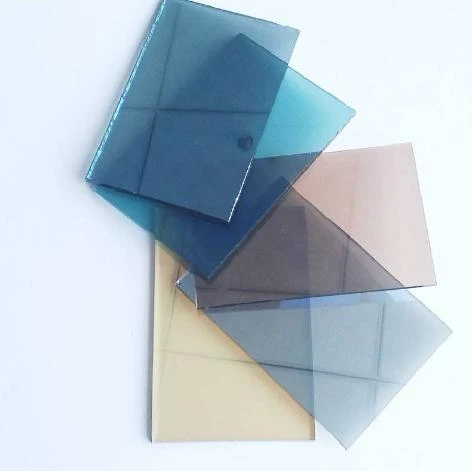Architectural Glass Solutions Transforming Design and Functionality
In the realm of modern architecture, glass has emerged as one of the most versatile and essential materials. Architectural glass solutions offer a unique blend of aesthetics, functionality, and sustainability, making it an indispensable element in contemporary design. From skyscrapers that define city skylines to residential homes that embrace natural light, the applications of architectural glass are vast and varied.
One of the primary advantages of architectural glass is its ability to enhance visual connectivity. Expansive glass facades allow for seamless interactions between indoor and outdoor environments, creating spaces that feel open and inviting. This connection to nature not only improves the overall aesthetic but also promotes well-being among occupants. Studies have shown that natural light can boost mood and productivity, making it especially beneficial in workplaces and educational settings.
Safety and energy efficiency are two other significant considerations in architectural glass solutions. Advanced technologies have led to the development of tempered and laminated glass, which provide enhanced safety through increased strength and resistance to impacts. Furthermore, energy-efficient glass options, such as low-emissivity (low-E) coatings, help reduce heat transfer, thereby improving insulation. This not only contributes to a building’s sustainability credentials but also results in lower energy bills, making glass a wise investment for both residential and commercial properties.
architectural glass solutions
Additionally, architectural glass can be customized to meet a wide array of design needs. From tinted and frosted glass to intricate patterns and textures, designers have an extensive palette to work with. This customization enables architects to reflect the identity of a brand or the specific characteristics of a neighborhood while also ensuring compliance with local building codes and regulations.
Sustainability has become a pivotal factor in architectural design, and glass solutions are increasingly addressing this need. The production of glass can be optimized to minimize environmental impact, and many manufacturers are now using recycled materials in their glass products. Furthermore, when installed with advanced technologies, glass can significantly reduce a building’s carbon footprint, aligning with the global push towards environmentally friendly construction practices.
In conclusion, architectural glass solutions are transforming the way we perceive and interact with our surroundings. By combining beauty, safety, efficiency, and sustainability, glass plays a crucial role in modern architecture. As technology continues to evolve, the potential for innovative glass applications will only expand, paving the way for dynamic and inspiring spaces that enhance our quality of life. Whether in urban landscapes or serene residential settings, architectural glass remains a hallmark of contemporary design, encapsulating the essence of modern living.
 Afrikaans
Afrikaans  Albanian
Albanian  Amharic
Amharic  Arabic
Arabic  Armenian
Armenian  Azerbaijani
Azerbaijani  Basque
Basque  Belarusian
Belarusian  Bengali
Bengali  Bosnian
Bosnian  Bulgarian
Bulgarian  Catalan
Catalan  Cebuano
Cebuano  Corsican
Corsican  Croatian
Croatian  Czech
Czech  Danish
Danish  Dutch
Dutch  English
English  Esperanto
Esperanto  Estonian
Estonian  Finnish
Finnish  French
French  Frisian
Frisian  Galician
Galician  Georgian
Georgian  German
German  Greek
Greek  Gujarati
Gujarati  Haitian Creole
Haitian Creole  hausa
hausa  hawaiian
hawaiian  Hebrew
Hebrew  Hindi
Hindi  Miao
Miao  Hungarian
Hungarian  Icelandic
Icelandic  igbo
igbo  Indonesian
Indonesian  irish
irish  Italian
Italian  Japanese
Japanese  Javanese
Javanese  Kannada
Kannada  kazakh
kazakh  Khmer
Khmer  Rwandese
Rwandese  Korean
Korean  Kurdish
Kurdish  Kyrgyz
Kyrgyz  Lao
Lao  Latin
Latin  Latvian
Latvian  Lithuanian
Lithuanian  Luxembourgish
Luxembourgish  Macedonian
Macedonian  Malgashi
Malgashi  Malay
Malay  Malayalam
Malayalam  Maltese
Maltese  Maori
Maori  Marathi
Marathi  Mongolian
Mongolian  Myanmar
Myanmar  Nepali
Nepali  Norwegian
Norwegian  Norwegian
Norwegian  Occitan
Occitan  Pashto
Pashto  Persian
Persian  Polish
Polish  Portuguese
Portuguese  Punjabi
Punjabi  Romanian
Romanian  Russian
Russian  Samoan
Samoan  Scottish Gaelic
Scottish Gaelic  Serbian
Serbian  Sesotho
Sesotho  Shona
Shona  Sindhi
Sindhi  Sinhala
Sinhala  Slovak
Slovak  Slovenian
Slovenian  Somali
Somali  Spanish
Spanish  Sundanese
Sundanese  Swahili
Swahili  Swedish
Swedish  Tagalog
Tagalog  Tajik
Tajik  Tamil
Tamil  Tatar
Tatar  Telugu
Telugu  Thai
Thai  Turkish
Turkish  Turkmen
Turkmen  Ukrainian
Ukrainian  Urdu
Urdu  Uighur
Uighur  Uzbek
Uzbek  Vietnamese
Vietnamese  Welsh
Welsh  Bantu
Bantu  Yiddish
Yiddish  Yoruba
Yoruba  Zulu
Zulu 

